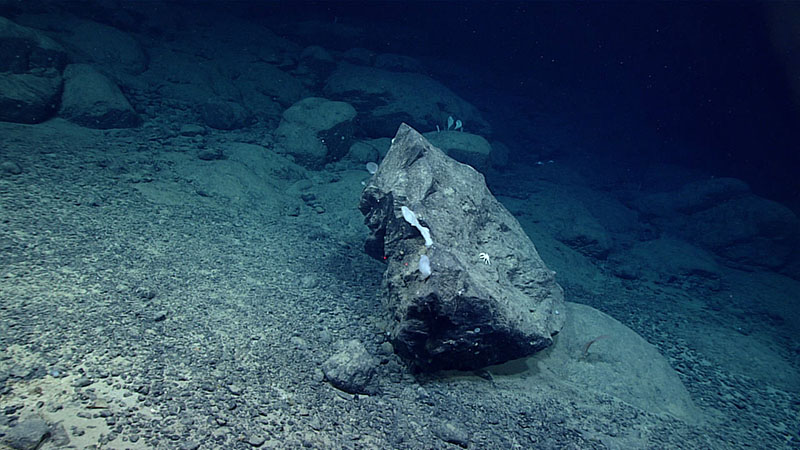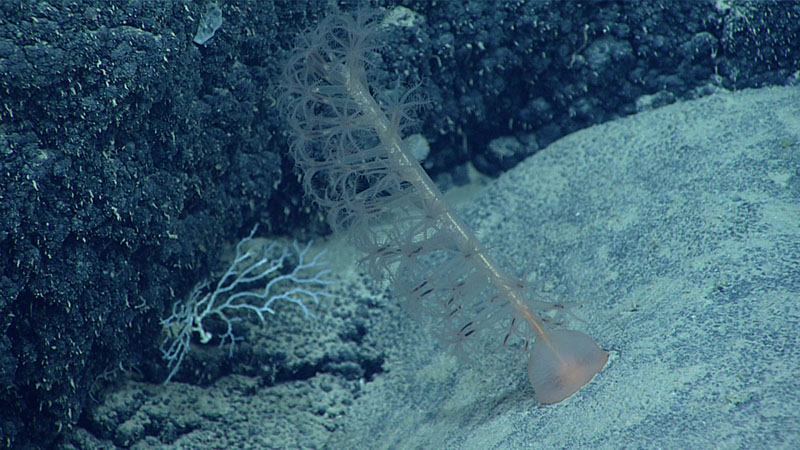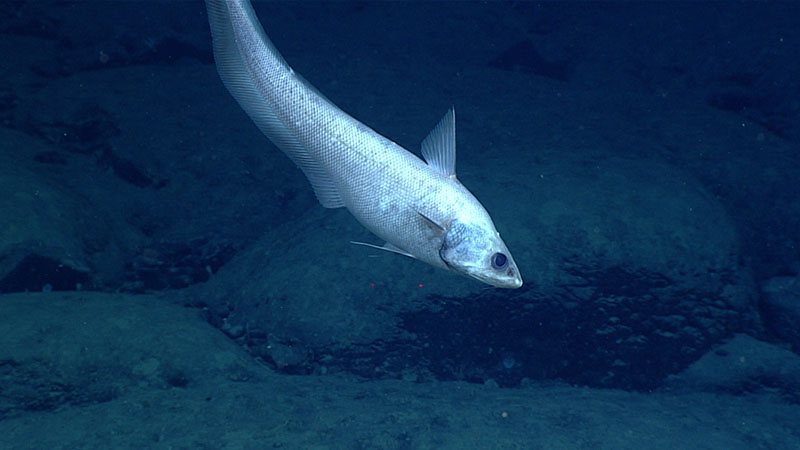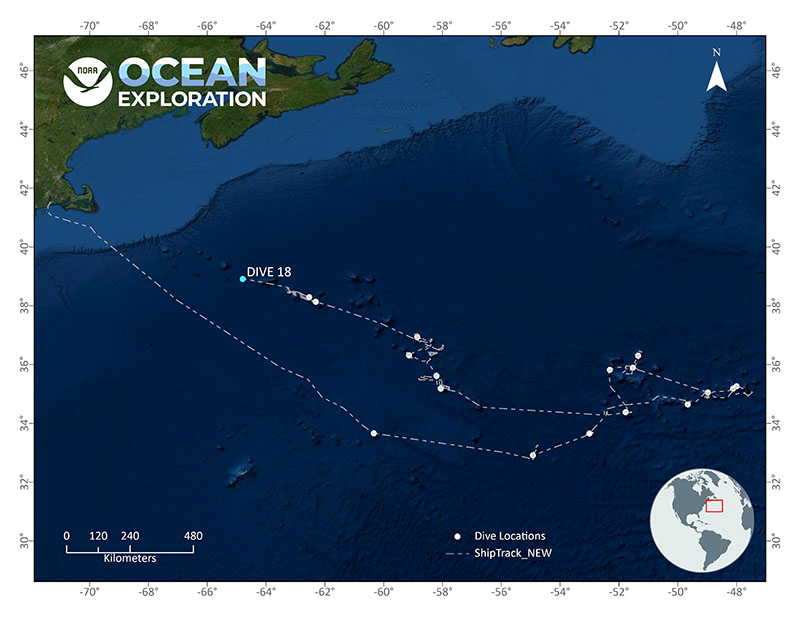
Date: July 25, 2021
Location: Lat: 38.926941°, Lon: -64.820437°
Dive depth range: 3,784 - 3,792 meters (12,415 - 12,441 feet)
Access Dive Summary and ROV Data
During Dive 18 of the 2021 North Atlantic Stepping Stones expedition, we observed more than five rare rock pens, despite being on the seafloor for less than an hour. It has been confirmed that these observations, made at a depth of 3,790 meters (12,434 feet) depth, represent the deepest-known record for rock pens in the Atlantic. The rock pens were also an unknown species, though unfortunately we were not able to collect one for further analysis. Video courtesy of NOAA Ocean Exploration, 2021 North Atlantic Stepping Stones: New England and Corner Rise Seamounts. Download largest version (mp4, 89.4 MB).

A close look at a bamboo coral seen at 3,787 meters (12,425 feet) depth during Dive 18 of the 2021 North Atlantic Stepping Stones expedition. Note that some of the individual coral polyps are partially open, while others are closed. Image courtesy of NOAA Ocean Exploration, 2021 North Atlantic Stepping Stones: New England and Corner Rise Seamounts. Download largest version (jpg, 740 KB).
After technical issues with the remotely operated vehicles delayed the start of Dive 18, we were able to conduct a short dive on “Asterina” Seamount, which is the easternmost of three small star-shaped seamounts west of Kelvin Seamount, within the New England Seamount Chain. Although the time on bottom was a brief 39 minutes total, we did make important observations that will hopefully support future exploration of the seamount.
Seafloor geology primarily consisted of large, sediment-free, ferromanganese-encrusted lobate and pillow lava outcrops and pockets of sediment and gravel cover. Biological observations included multiple types of glass sponges, anemones, bamboo and black corals, sea pens, and several individuals of rare rock pens of an unknown species that also set a new depth record for rock pens in the Atlantic.

This large angular boulder was observed resting on a pillow lava outcrop and volcaniclastic sediment and gravel cover during Dive 18 of the 2021 North Atlantic Stepping Stones expedition. Most likely the boulder broke off from an outcrop further up toward the seamount’s summit peak and rolled downslope. We saw several of these large displaced boulders during the dive, suggesting that the slope above the dive transect may be significantly unstable. Image courtesy of NOAA Ocean Exploration, 2021 North Atlantic Stepping Stones: New England and Corner Rise Seamounts. Download largest version (jpg, 1.2 MB).

Rock pens were abundant on Dive 18 of the 2021 North Atlantic Stepping Stones expedition, with more than five being seen during our short time on the seafloor. The dive thus confirms the abundant presence of rock pens in this area and represents the deepest known record of these rock pens in the Atlantic. Image courtesy of NOAA Ocean Exploration, 2021 North Atlantic Stepping Stones: New England and Corner Rise Seamounts. Download largest version (jpg, 1.3 MB).

This grenadier fish (Coryphaenoides armatus) was seen swimming above the seafloor of “Asterina” Seamount at a depth of 3,790 meters (12,434 feet) during Dive 18 of the North Atlantic Stepping Stones expedition. Image courtesy of NOAA Ocean Exploration, 2021 North Atlantic Stepping Stones: New England and Corner Rise Seamounts. Download largest version (jpg, 846 KB).

Location of Dive 18 of the 2021 North Atlantic Stepping Stones expedition on July 25, 2021. Map courtesy of NOAA Ocean Exploration, 2021 North Atlantic Stepping Stones: New England and Corner Rise Seamounts. Download largest version (jpg, 3 MB).

Image showing the dive track of Dive 18 of the 2021 North Atlantic Stepping Stones expedition. Scale is water depth in meters. Image courtesy of NOAA Ocean Exploration, 2021 North Atlantic Stepping Stones: New England and Corner Rise Seamounts. Download largest version (jpg, 635 KB).